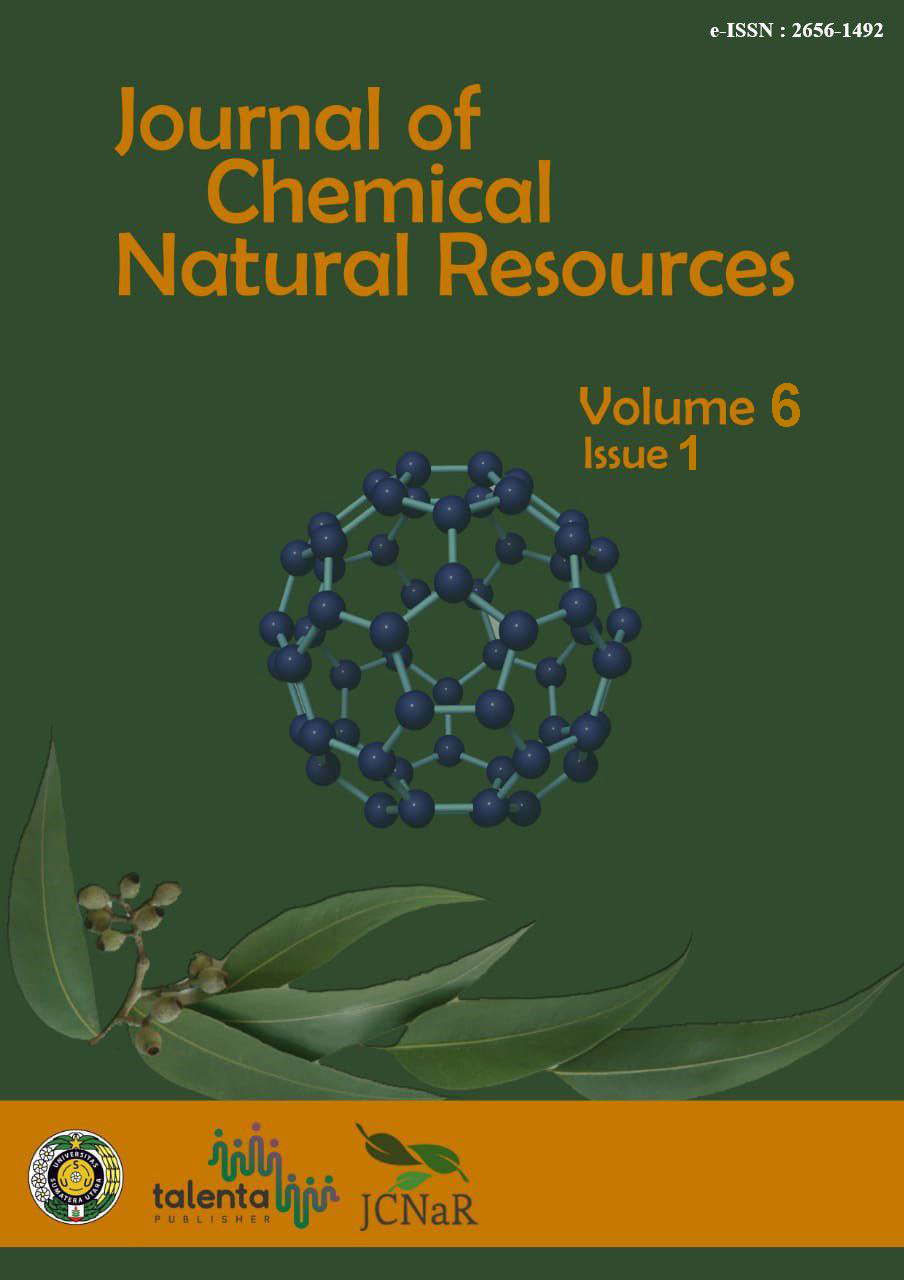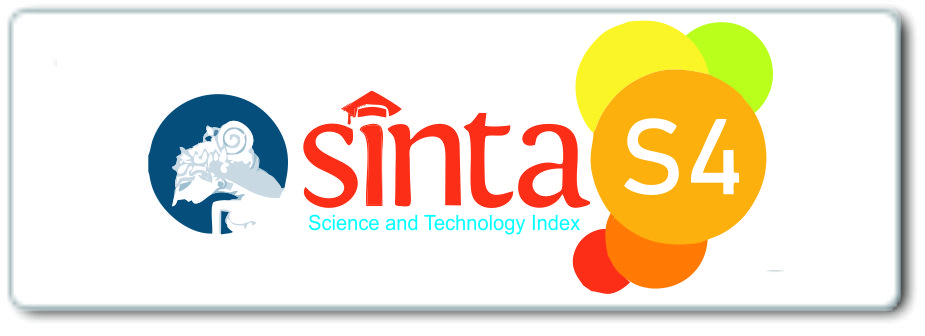Determination of Maximum Adsorption Capacity of Chitosan and Carboxymethyl Chitosan on the Absorption of Metal Ions Cr (VI) Based on the Langmuir Equation
DOI:
https://doi.org/10.32734/jcnar.v6i1.16212Keywords:
Adsorption, Carboxymethyl Chitosan, Chitosan, Chrom (VI) Metal, Langmuir EquationAbstract
A study has been conducted to investigate the adsorption of chrom (VI) metal ions by hand chitosan and carboxymethyl chitosan. This research aimed to examine the adsorption capacity of chitosan and carboxymethyl chitosan and determine the applicability of the Langmuir isotherm adsorption method for adsorbing Cr (VI) metal ions utilizing these materials. Chitosan was chemically treated with a 40% NaOH solution and monochloroacetic acid, dispersed in 2-propanol at room temperature for 10 h. This reaction resulted in the formation of carboxymethyl chitosan. FT-IR analyzed the functional group of carboxymethyl chitosan. The adsorption process was conducted using a standard solution with varying concentrations of Cr6+, specifically 5, 10, 15, and 20 mg/L. The concentration of Cr6+ adsorbed was measured using an Atomic Absorption Spectrophotometer. The findings demonstrated that carboxymethyl chitosan exhibited the maximum capacity for adsorbing chrom metal ions, with a mass of 0.9179 mg/g carboxymethyl chitosan at a concentration of 20 ppm. Chrom (VI) metal ion adsorption by carboxymethyl chitosan follows the Langmuir equation with an R2 value greater than 0.9. The maximum adsorption capacity of carboxymethyl chitosan is 1.16 mg/g, which is higher compared to chitosan's capacity of only 0.60 mg/g.
Downloads
References
P. Sugita, Kitosan Sumber Biomaterial Masa Depan. Bogor: IPB Press, 2009.
A. M. . Edelynna, Wirespathi, Raharjo, and W. Budijastuti, “Pengaruh Kromium Heksavalen (VI) Terhadap Tingkat Kelangsungan Hidup Ikan Nila (Oreochromis niloticus),†Lentera Bio, vol. 1, no. 2, pp. 75–79, 2012.
T. L. Daulton and B. J. Little, “Determination of chromium valence over the range Cr(0)-Cr(VI) by electron energy loss spectroscopy,†Ultramicroscopy, vol. 106, no. 7, pp. 561–573, 2006, doi: 10.1016/j.ultramic.2006.02.005.
H. Effendi, Telaah Kualitas Air. Bogor: IPB Press, 2003.
M. A. Astari and B. Utami, “Uji Daya Adsorpsi Adsorben Kombinasi Sekam Padi dan Bagasse Fly Ash untuk Menjerap Logam Cu pada Sistem Batch,†Proceeding Biol. Educ. Conf., vol. 15, no. 1, pp. 766–774, 2018.
R. A. Bailey, Chemistry of the Environment. New York: Academic Press., 1978.
W. Stumm, Aquatic Chemistry. Canada: John Wiley and Sons Ltd, 1996.
T. K. Varun, S. Senani, N. Jayapal, J. Chikkerur, S. Roy, and V. B. Tekulapally, “Extraction of chitosan and its oligomers from shrimp shell waste , their characterization and antimicrobial effect,†vol. 10, 2017, doi: 10.14202/vetworld.2017.170-175.
K. Piekarska, M. Sikora, M. Owczarek, J. Jóźwik-Pruska, and M. Wiśniewska-Wrona, “Chitin and Chitosan as Polymers of the Future—Obtaining, Modification, Life Cycle Assessment and Main Directions of Application,†Polymers (Basel)., vol. 15, no. 4, 2023, doi: 10.3390/polym15040793.
I. Nainggolan et al., “Sensitivity of chitosan film based electrode modified with reduced graphene oxide ( rGO ) for formaldehyde detection using cyclic voltammetry,†South African J. Chem. Eng., vol. 48, no. December 2023, pp. 184–193, 2024, doi: 10.1016/j.sajce.2024.02.001.
N. Desai et al., “Chitosan: A Potential Biopolymer in Drug Delivery and Biomedical Applications,†Pharmaceutics, vol. 15, no. 4, 2023, doi: 10.3390/pharmaceutics15041313.
S. Sun and A. Wang, “Adsorption kinetics of Cu(II) ions using N,O-carboxymethyl-chitosan,†J. Hazard. Mater., vol. 131, no. 1–3, pp. 103–111, 2006, doi: 10.1016/j.jhazmat.2005.09.012.
M. Lasindrang, “Adsorpsi Pencemaran Limbah Cair Industri Penyamakan Kulit Oleh Kitosan Yang Melapisi Arang Aktif Tempurung Kelapa,†J. Teknosains, vol. 3, no. 2, 2014, doi: 10.22146/teknosains.6026.
F. Ananda, “Penggunaan Karboksimetil Kitosan dari Cangkang Belangkas (Tachypleus Gigas) sebagai Adsorben untuk Menurunkan Konsentrasi logam Pb,†Universitas Sumatera Utara, 2015.

Downloads
Published
Issue
Section
License
Copyright (c) 2024 Journal of Chemical Natural Resources

This work is licensed under a Creative Commons Attribution-ShareAlike 4.0 International License.














